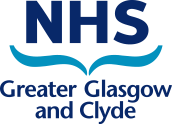Safe use of insulin for adults admitted to hospital - Discharge
Part 4 – Safe Discharge from Hospital
This is the fourth and final blog in a series outlining risks relating to insulin prescribing and administration for adults in hospital, and at discharge and aims to provide good practice points to minimise these risks.
Key messages
- For safe use of insulin on discharge, it is essential to start discharge planning at an early stage particularly if a referral is required to district nurses for ongoing support
- Clear documentation of insulin regimes at discharge on the Immediate Discharge Letter (IDL) is essential to ensure continuity and safety at discharge
- Clinical staff are advised to follow the NHSGGC ‘Key Insulin Safety Tips’ and discharge checklist, which can be accessed via Diabetes, Inpatient Prescribing FAQs for Junior Doctors (nhsggc.org.uk)
- Follow the advice below on discharge planning, how to complete the IDL and district nurse administration
Think ahead - does the patient know what to do?
- Whenever possible, patients should be encouraged and supported to self-administer insulin.
- If insulin is started during the inpatient stay, ensure the patient has received education from the diabetes specialist nurse (DSN) service. This is essential to ensure safety, provision of glucose/ketone meters where appropriate, promote patient independence, and ongoing community follow-up.
- If newly started on insulin, or the insulin regime has changed during admission, ensure the patient/carer is aware of what dose to administer and a referral has been made to the community DSN service for post-discharge follow-up.
- Contact your local Acute DSN service for advice on referrals to community DSN service as the process for this varies across NHSGGC acute sites.
- If patient/carer is unable to inject insulin at home and district nurse administration required ensure that appropriate arrangements are made for this prior to discharge.
District Nurse Administration
- Patients who cannot administer insulin themselves should be referred to the Acute DSN service for review prior to discharge. Not all insulin regimes can be facilitated by district nurses and may need adjusted prior to discharge.
- The dose of insulin to be taken must be clearly documented on the letter section of the IDL to allow for district nurse administration at home. Missing details or ambiguous instructions can lead to dose delays and compromise blood glucose control and patient safety.
- Where possible, 10ml vials of insulin should be prescribed and supplied, unless the preparation is only available in prefilled pens.
Completing the Immediate Discharge Letter (IDL)
-
Ensure the correct insulin brand and device is selected on the IDL. Always check against HEPMA and the Insulin Prescription and Administration Record (IPAR) in case the insulin regime has changed during admission.
-
Generally, patients will be discharged with prefilled insulin pens if a supply is required unless:
-
a cartridge is the only available presentation (e.g. Humulin S for use with refillable pen)
-
the patient usually uses vials or
-
a district nurse is administering, see above
-
-
Ensure the frequency of doses is specified on the drug entry of the IDL; e.g.
TRESIBA FLEXTOUCH “to be injected as per blood glucose AT BEDTIME”,
NOVORAPID FLEXPEN “to be injected as per blood glucose with meals”
HUMULIN M3 CARTRIDGES “to be injected as per blood glucose TWICE daily with morning and evening meal”
-
Detail the specific doses to be taken (number of units (ensuring the word ‘units’ is written in full) and timings) in the letter portion of the IDL. DO NOT specify doses in the instruction section for the individual drug (this can result in inaccurate information being stored on Clinical Portal and risks the incorrect dose being given on a subsequent admission). See example below (use zoom function to enlarge image and if using a mobile device, switch to landscape):

Correction Doses (PRN insulin)
- Rapid acting insulin given for inpatient correction doses should not routinely be supplied on discharge.
- On very rare occasions “as required” rapid acting insulin may be needed for patients going to supported care facilities – a detailed plan for dose adjustment should always be discussed with the diabetes team and clearly documented in the letter section of the IDL. If in doubt contact the diabetes inpatient team.
|
Remember: Patients with type 1 diabetes or previous diabetic ketoacidosis (DKA) should always receive their long acting insulin while an inpatient (unless advised by the inpatient diabetes team). Missing any insulin can lead to development of DKA. |
Refer to other blogs in the insulin safety series:
Safe Use of Insulin for Adults Admitted to Hospital – Summary of Blog Series
Safe use of insulin for adults admitted to hospital - Medicines Reconciliation
Safe use of insulin for adults admitted to hospital - Prescribing
Safe use of insulin for adults admitted to hospital - Administration
Published 26/06/2023. Link to guideline updated 08/09/23. Medicines Update blogs are correct at the time of publication.
If you would like to subscribe to Medicines Update or provide feedback on the blogs, email medicines.update@ggc.scot.nhs.uk.
Follow Medicines Update on Twitter @NHSGGCMeds
